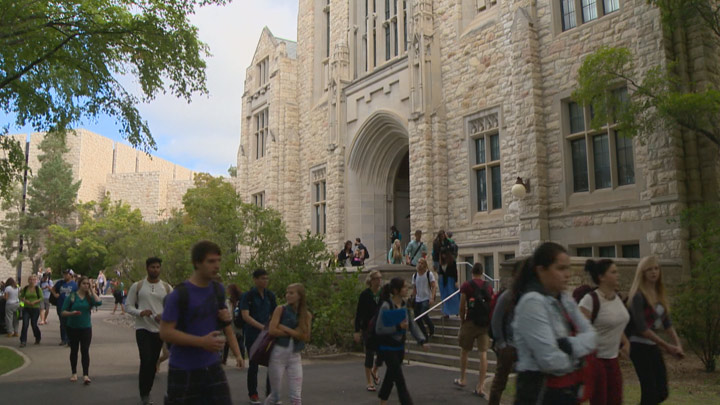University of Saskatchewan (U of S) officials said sexual assault is a global issue and on Monday, the campus released its official policy on the crime.

There will no longer be questions about what consent is and documents now reinforce the campus’ zero tolerance for sexual assault or misconduct at a campus that is supposed to be a safe haven for post-secondary students but at times hasn’t been.
READ MORE: Alleged sexual assault reported on-campus at the University of Saskatchewan
Between 2009-14, 11 sexual assaults were reported at the U of S. So far this school year, there have been two sexual assaults reported to protective services.
In 2012, there was one sexual assault reported to campus security by a 20-year-old woman who said she was repeatedly raped at a student residence on campus on New Year’s Day in 2012. It was also reported to police and went to trial where one man was convicted, the other acquitted.
WATCH MORE: One of two men guilty in Saskatoon sexual assault
The university admits that at the time of the assault, it failed the victim and failed to issue a warning to the entire student body for six weeks.
On Monday, officials said never again would they fail a victim as they launched its Sexual Assault Awareness Week along with a stand-alone prevention policy, procedure documents and new initiatives to keep students safe.
“What we’re hoping is the word will spread that if you see something, you should be reacting to it,” said Patti McDougall, vice-provost of teaching and learning at the U of S.
“So we’re trying to build and shift that culture of responding to these things when they happen and responding in a way that can prevent some of these things from happening.”
At the very least a safe environment said campus officials.
WATCH MORE: REACT to Sexual Assault
An awareness campaign and website are fundamental pieces the U of S has now put into place and said they are still a bit baffled as to why consent is so misunderstood.
“I don’t know, I don’t know. I think you have seen the U of S and campuses across the country come out with education campaigns around consent. I guess, I would say that we haven’t hit the right mark yet if we still have people who are unclear or unwilling to comprehend what affirmative consent really looks like,” McDougall said.
An additional tool in creating a space on-campus is a new safety app. Thousands of students within the next year are expected to download it and features include “Virtual Safe Walk.”
“Which enables any user to actually choose a contact in their phone and they can send a link to that user and they will be able to see them on a map and that person will be able to set their location and the person will literally see them walking,” said Peter Hedley, support services director at the U of S.
Should anything go wrong en route to a student’s destination, Hedley said the contact will have the student’s coordinates. A student can also trigger an emergency call function in the event of a crisis to either contact Protective Services or 911.
According to national data, the majority of sexual assaults at universities take place within a student’s first year, within the first eight weeks and alcohol is frequently involved.
“What we’ve come to believe is only a fraction of those sexual assaults are actually ever reported and an even smaller portion are ever seen or heard of in court,” McDougall said.
“Which stands to reason why we are so assertively going after this idea of people coming forward, we want to help people who have been harmed in this way.”



Comments